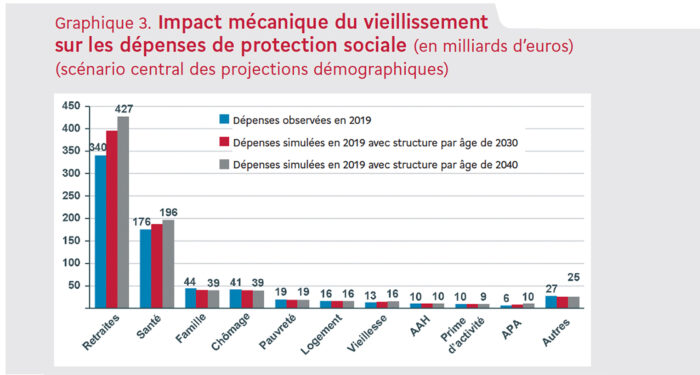Arnauld d’Yvoire proviides an overview of the pension systems in force in Europe here, recapping the philosophy that presided over their development. He thus distinguishes aptly between three general models that have, admittedly, evolved over time:
— Pension systems of the Bismarckian type, based on the principle of social insurance. These are organized on occupational lines and managed by the social partners. Their funding is based, in the main, on employers’ and employees’ contributions, and pension rights are closely linked to the period over which contributions have been made and the level of pay. This model applies particularly in Germany, Italy, Greece and France.
— Pensions systems of the Beveridgian type which depend essentially on the state. From the outset, these have no connection to occupational activity and provide retired people with a basic pension to which supplementary schemes may be added based on the capitalization principle (pension funds).
— The pensions systems promoted by the World Bank in the countries of Eastern Europe after the break-up of the Soviet Union, which have three pillars to them. Two of these pillars are obligatory: a basic pension of a Bismarckian kind on a pay-as-you-go basis and a second, funded pillar.
Arnauld d’Yvoire emphasizes, however, that all these systems have necessarily undergone some development and no longer correspond to the pure model that presided over their introduction. He stresses the fact that, in all countries — though admittedly at different dates and with differing degrees of anticipation — reforms have been undertaken aimed at restraining the increased expenditure associated with retirement pensions. This has been done through two measures: increasing the number of years of occupational activity, and promoting savings to offset the relative fall in basic pensions. He shows, in this way, that some countries have, much earlier than others, made the necessary arrangements to cope with the inevitable ageing of the population and the increase in pension costs. He also shows that, though none has found a ‘dream solution’ to the problem, each has tried with varying degrees of anticipation to adapt to a new, but easily foreseeable, situation.
Pension Systems in Europe
Cet article fait partie de la revue Futuribles n° 365, juil.-août 2010


